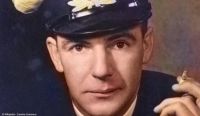The 5th of August 1962 remains one of the most significant days in the history of South Africa. It was the day that Nelson Mandela was arrested and the start of his incarceration of over 27 years. Madiba was returning to Johannesburg after having spent the weekend in KwaZulu-Natal, briefing comrades and the President-General of the African National Congress, Chief Albert Luthuli, of his clandestine trip through Africa and London. Mandela was Commander-in-Chief of the newly established military wing of the ANC, Umkhonto we Sizwe and was tasked with addressing the Pan African Freedom Movement of East and Central Africa Conference, a precursor to the African Union, in Ethiopia. Part of his trip was spent visiting various newly independent African states to gather support for the armed struggle, and to receive military training.
Madiba’s arrest with Cecil Williams

Cecil Williams.
(Image: Unknown)Mandela was travelling with Cecil Williams, an anti-Apartheid activist, acting as his chauffeur and using the alias David Motsamayi. After meeting Chief Luthuli, Madiba and Cecil reunited on the 4th of August and spent the evening at the home of the journalist G R Naidoo where several comrades were in attendance. The next morning, they left for Johannesburg with Cecil on the steering wheel, driving the popular 1962 Austin Westminster.
Shortly after leaving Howick, the road ran next to the main railway line where they were overtaken by a Ford V-8 filled with white men with two more cars behind them. Cecil was forced to slow down and pull over. The police had chosen their hiding place well and the terrain gave Mandela and Williams little chance of escape. A dishevelled police officer introduced himself as Sergeant Vorster of the Pietermaritzburg police and produced a warrant of arrest. Mandela identified himself as David Motsamayi, but Wessels brushed this aside, saying “Ag, you’re Nelson Mandela and this is Cecil Williams and you are under arrest”.

The Humber from the movie, "Mandela: Long Walk to Freedom".
(Image: Nelson Mandela Foundation)In the movie, Mandela: Long Walk to Freedom, the authorised cinematic dramatisation of Nelson Mandela’s autobiography, this scene is portrayed. However, instead of the Austin Westminster, a Humber was used for the simple reason that they couldn’t find the right car. The Humber was donated by Videovision Entertainment to the Nelson Mandela Foundation after being used in the movie. The Humber is now on permanent display at the Foundation’s Centre of Memory in Houghton, which is now open to the public every Saturday from 9am to 4pm and on weekdays by appointment only, which can be made through bookings@nelsonmandela.org.